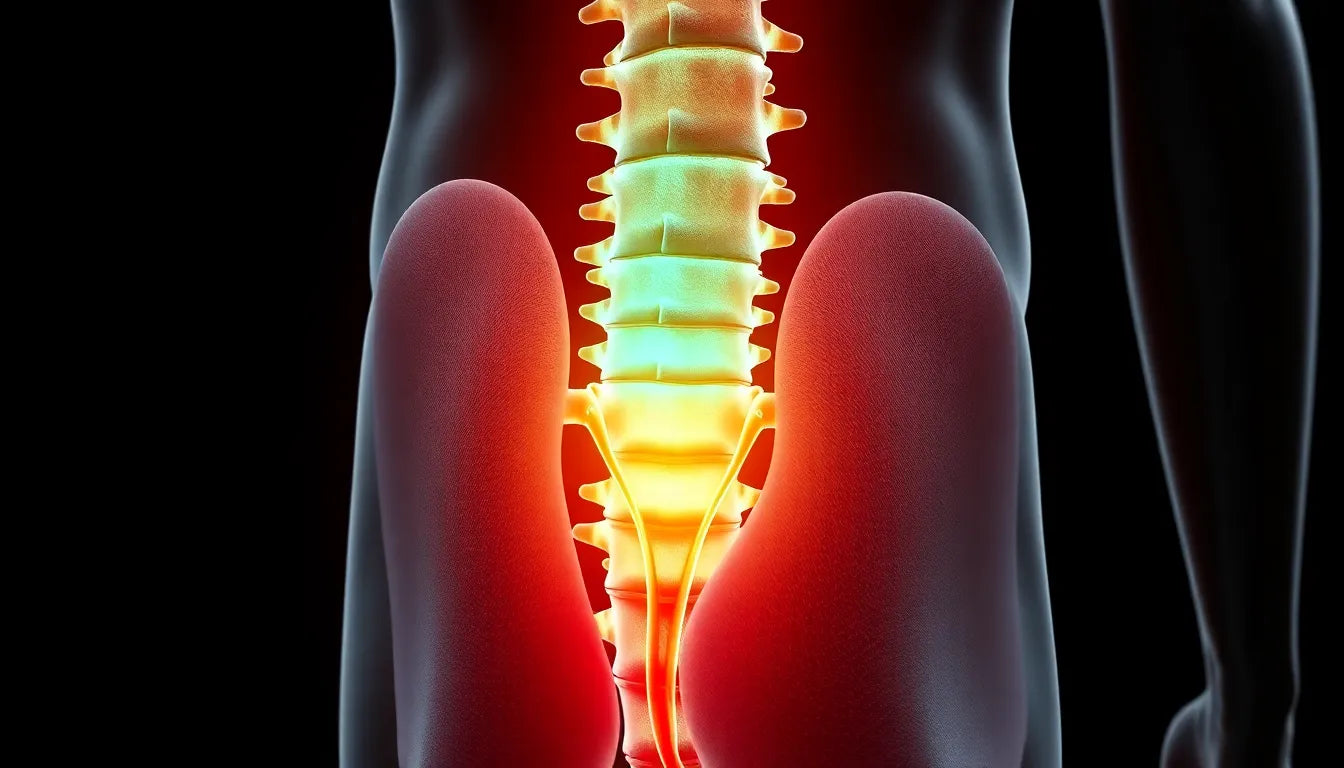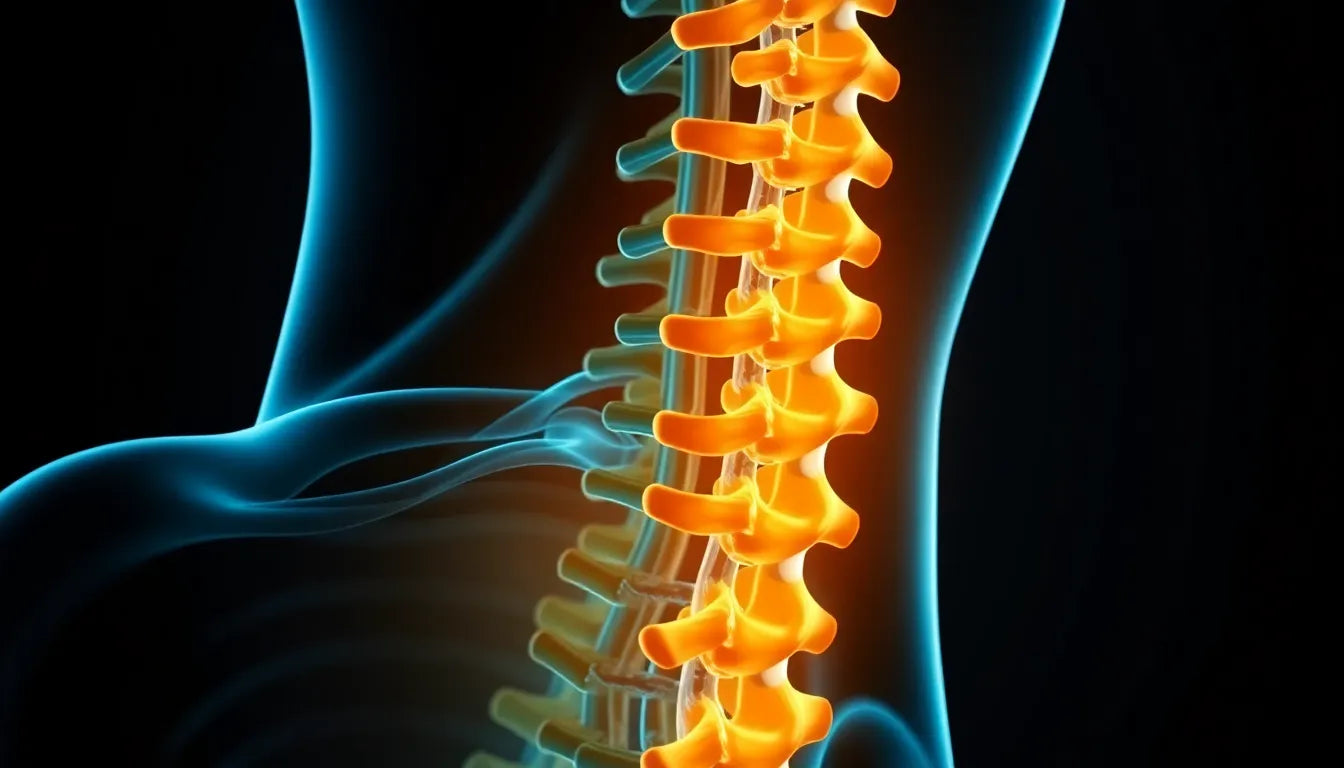Understanding the intricacies of spinal health is crucial, especially when it comes to conditions like spondylosis and radiculopathy. These terms may sound daunting, but they describe common issues that many people encounter as they age. Spondylosis refers to a degenerative condition affecting the spine, often resulting from natural wear and tear over time. It involves changes such as disc degeneration, bone spurs, and thickening of ligaments, all of which can impact spinal function.
Radiculopathy, on the other hand, occurs when nerve roots in the spinal column are compressed or irritated. This compression can lead to a variety of symptoms, including pain, numbness, tingling, and muscle weakness. These symptoms often radiate from the spine to other parts of the body, depending on which nerve roots are affected. The combination of these two conditions is what we refer to as "other spondylosis with radiculopathy."
Focusing beyond cervical and lumbar regions
While cervical (neck) and lumbar (lower back) spondylosis with radiculopathy are frequently discussed, it's important to acknowledge that these conditions can affect other parts of the spine as well. Thoracic spondylosis with radiculopathy, for instance, involves the mid-back region and can lead to unique symptoms like mid-back pain and discomfort radiating around the ribcage. Understanding these less common manifestations is vital for comprehensive spinal health awareness.
Why understanding this condition matters
Degenerative spinal conditions like spondylosis are prevalent, particularly as people age. They can significantly impact an individual's quality of life, leading to chronic pain, reduced mobility, and other complications. By gaining a deeper understanding of "other spondylosis with radiculopathy," individuals can better recognize symptoms, seek timely diagnosis, and explore effective treatment options.
The goal of this post is to provide a thorough overview of this condition, covering its symptoms, diagnostic approaches, and various treatment strategies. By doing so, we aim to empower readers with the knowledge needed to manage their spinal health proactively. Whether you're experiencing symptoms yourself or supporting someone who is, understanding the nuances of these conditions is a crucial step toward unlocking relief and improving overall well-being.
clinical definitions and causes of spondylosis with radiculopathy
Spondylosis is a term that broadly describes the age-related degeneration and arthritis affecting the spinal discs, joints, and ligaments. This condition often leads to structural changes in the spine, such as disc degeneration, the formation of bone spurs, and the thickening of ligaments. These changes can narrow the spaces through which nerve roots exit the spine, resulting in nerve compression, a condition known as radiculopathy.
Radiculopathy occurs when these structural changes compress or irritate the spinal nerve roots, leading to symptoms such as pain, numbness, tingling, and weakness that radiate from the spine to other areas of the body. Common causes of these degenerative changes include aging, genetic predisposition, and lifestyle factors like sedentary habits and poor posture, which can exacerbate the condition.
symptoms and regional differentiation
Understanding the symptoms of spondylosis with radiculopathy is crucial for identifying the affected spinal region and seeking appropriate treatment. Each spinal region presents unique symptoms:
cervical spondylosis with radiculopathy
This condition affects the neck region and is characterized by neck pain and stiffness. Symptoms often extend to the arms and hands, causing radiating pain, tingling, numbness, and weakness. In severe cases, cervical spondylosis can lead to myelopathy, which involves spinal cord compression and may result in more significant neurological deficits.
lumbar spondylosis with radiculopathy
In the lower back, lumbar spondylosis presents with low back pain and symptoms that radiate into the legs, commonly referred to as sciatica. Patients may experience numbness, tingling, and weakness in the lower extremities, and severe cases can interfere with mobility and daily activities.
thoracic spondylosis with radiculopathy
Though less common, thoracic spondylosis affects the mid-back region. Symptoms include mid-back pain and radiating discomfort around the ribcage. In some cases, patients may experience breathing difficulties due to the proximity of the thoracic spine to the ribcage.
diagnostic approaches
Accurate diagnosis is essential for effective management of spondylosis with radiculopathy. The diagnostic process typically involves:
clinical examination
A thorough clinical examination includes a detailed history-taking and physical and neurological evaluations. This helps in assessing the extent of nerve involvement and identifying the specific spinal region affected.
imaging techniques
Imaging studies such as X-rays, MRI, and CT scans are crucial for visualizing structural changes in the spine, such as disc degeneration, bone spurs, and areas of nerve compression. These imaging techniques provide detailed insights into the condition, aiding in accurate diagnosis and treatment planning.
nerve tests
Electromyography (EMG) and nerve conduction studies are sometimes used to assess nerve function and confirm the presence of radiculopathy. These tests measure the electrical activity of muscles and nerves, providing additional information about nerve damage or compression.
Understanding the clinical definitions, symptoms, and diagnostic approaches for spondylosis with radiculopathy is vital for effective management of the condition. By recognizing the signs and seeking timely medical evaluation, individuals can explore appropriate treatment options and take proactive steps towards maintaining spinal health and improving their quality of life.
Effective treatment approaches for spondylosis with radiculopathy
When managing other spondylosis with radiculopathy, a range of treatment options is available, tailored to the severity of the condition and individual patient needs. The primary goal is to alleviate symptoms, improve function, and prevent further degeneration.
Conservative management
Most cases of spondylosis with radiculopathy can be managed through conservative means. Physical therapy plays a crucial role in strengthening the muscles supporting the spine, improving flexibility, and reducing pain. Pain medications, such as non-steroidal anti-inflammatory drugs (NSAIDs), are commonly prescribed to manage discomfort. In some cases, corticosteroid injections may be used to reduce inflammation and alleviate nerve compression symptoms. Activity modification, including ergonomic adjustments at work and home, is also recommended to minimize strain on the spine.
Surgical options
When conservative treatments fail to provide relief, or if there is significant nerve dysfunction or risk of permanent damage, surgical intervention may be necessary. Surgical options include decompression procedures, which involve removing bone spurs or disc material that compresses nerves, and spinal fusion, which stabilizes the affected spinal segment. The decision to undergo surgery is made after thorough evaluation and discussion between the patient and their healthcare provider.
Postoperative recovery
Recovery from spinal surgery requires a comprehensive rehabilitation plan. Postoperative physical therapy is essential to restore mobility, strength, and function. Patients are encouraged to adopt ergonomic practices and maintain a healthy lifestyle to support long-term spine health. Adhering to these strategies can significantly enhance recovery outcomes and prevent recurrence of symptoms.
Understanding associated conditions and risks
Spondylosis with radiculopathy may be accompanied by other spinal conditions, such as spondylolisthesis, where one vertebra slips over another, and myelopathy, which involves spinal cord compression. These conditions can lead to more severe neurological deficits if left untreated. Recognizing risk factors, such as age, genetics, previous injuries, obesity, and poor posture, is crucial in mitigating these risks and managing the condition effectively.
Preventive strategies for spinal health
Preventive measures are vital in managing and reducing the risk of spondylosis with radiculopathy. Ergonomic interventions, such as proper workplace setup and posture correction, are essential in preventing or alleviating symptoms. Regular exercise, including activities that enhance core strength and flexibility, can help maintain a healthy spine. Additionally, weight management and avoiding sedentary habits contribute to overall spinal health.
Frequently Asked Questions
What is the difference between spondylosis and radiculopathy?
Spondylosis refers to degenerative changes in the spine, while radiculopathy involves symptoms arising from nerve root compression, such as pain, numbness, and weakness.
Can spondylosis with radiculopathy be cured?
While it cannot be cured, symptoms can often be managed effectively with conservative treatments and lifestyle changes.
When should I see a doctor for spondylosis symptoms?
Seek medical advice if you experience persistent pain, numbness, or weakness, especially if it interferes with daily activities.
Are there non-surgical ways to manage spondylosis with radiculopathy?
Yes, many cases can be managed with physical therapy, medications, and ergonomic adjustments.
How can ergonomic aids help with spondylosis symptoms?
Ergonomic aids can improve posture, reduce strain on the spine, and alleviate pain, contributing to better management of symptoms.
By understanding the treatment options, associated risks, and preventive strategies for spondylosis with radiculopathy, individuals can take proactive steps toward managing their condition and improving their quality of life. Adopting a comprehensive approach to spinal health is essential in unlocking relief and maintaining overall well-being.
Sources
- Cleveland Clinic. "Radiculopathy: Symptoms, Causes & Treatment."
- Mayo Clinic. "Cervical Spondylosis: Symptoms & Causes."
- Johns Hopkins Medicine. "Radiculopathy."
- OWCH Health. "Lumbosacral Spondylosis with Radiculopathy: Symptoms and Treatment."
- HSS. "Lumbar and Cervical Spondylosis: Symptoms & Treatments."
- Gleneagles. "Spinal Spondylosis: Symptoms, Causes & Signs."


















